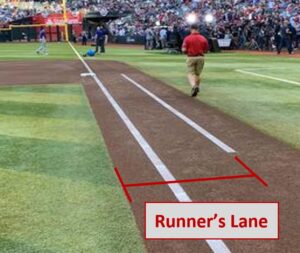The Rays made an “early” strike in deadline season yesterday, shipping off their Competitive Balance Round A selection (No. 37 overall) in Sunday’s draft to acquire righty Bryan Baker from the division-rival Orioles. Baker, 30, has had his two worst outings of the season in his final Orioles appearance and last night’s Rays debut — which came just hours after he was “shocked” to learn he was traded and boarded a last-minute flight to meet his new team in Boston — but carried a 2.58 ERA and 33.3% strikeout rate through July 5. He comes to the Rays with three additional seasons of club control, as well.
Following the trade, O’s general manager Mike Elias acknowledged that Thursday’s trade was “earlier than my comfort level” but that the timing of the draft and strength of the return pushed him to make a deal sooner than he’d have preferred (link via Roch Kubatko of MASNsports.com). It’s feasible that other general managers/president of baseball operations feel similar pressure if presented with opportunities to add an extra pick over the next two-plus days.
As a refresher, Competitive Balance picks are the only picks in the annual amateur draft that are eligible to be traded. They can only be traded one time, meaning the pick the Orioles received for Baker — and the picks the Dodgers, Guardians and Red Sox received in trades of Gavin Lux, Josh Naylor and Quinn Priester, respectively — are now locked in place for those clubs. There are still a handful of selections that could be traded, however.
Here’s a rundown of the picks in Competitive Balance Rounds A and B. MLBTR has confirmed via industry sources that the picks held by the Dodgers, Yankees and Mets in Round A are ineligible to be traded, as they’re technically first-round picks that were dropped down into Competitive Balance Round A as penalty for exceeding the luxury tax by more than $40MM. Similarly, the picks held by the Rays and Brewers in Round B are ineligible to be traded due to the fact that they are compensation for failing to sign last year’s picks in Competitive Balance Round B. Picks that are eligible to be traded are in bold; those ineligible to be moved are in strikethrough font. The deadline to trade any of these eligible picks is 4pm ET on Sunday — two hours prior to the start of this year’s amateur draft.
Round A
No. 33 overall: Red Sox (acquired from Brewers in exchange for RHP Quinn Priester)- No. 34: Tigers
- No. 35: Mariners
- No. 36: Twins
No. 37: Orioles (acquired from Rays in exchange for RHP Bryan Baker)No. 38: MetsNo. 39: YankeesNo. 40: DodgersNo. 41: Dodgers (acquired from Reds in exchange for INF/OF Gavin Lux)No. 42: Rays (acquired from A’s in exchange for LHPs Jeffrey Springs, Jacob Lopez)- No. 43: Marlins
Round B
- No. 66 overall: Guardians
No. 67: Rays (compensation for unsigned pick in 2024)No. 68: Brewers (compensation for unsigned pick in 2024)- No. 69: Orioles
No. 70: Guardians (acquired from D-backs in exchange for 1B Josh Naylor)- No. 71: Royals
- No. 72: Cardinals
- No. 73: Pirates
- No. 74: Rockies
The Tigers are the only clear buyer with a pick that can be traded, and it’s a prominent one. The Mariners and Cardinals are only one game out of a Wild Card spot in their respective leagues. Seattle is expected to act as a buyer and has been on the hunt for corner infield bats and late-inning bullpen help. The Royals (3.5 games), Twins (4) and Guardians (5) are all within five games of a Wild Card spot.
Fans would largely welcome the advent of additional selections becoming eligible to be traded, but that’s not in the cards for now. MLBPA executive director Bruce Meyer joined Foul Territory earlier this week and told hosts Scott Braun, Erik Kratz and A.J. Pierzynski that the union is in favor of trading draft picks and has unsuccessfully raised the issue in past waves of collective bargaining (video link, draft pick talk coming around the one hour, 12-minute mark).
“This union has consistently been in favor of teams being able to trade draft picks,” said Meyer. “It would help competition. We think it would help small-market teams that have those valuable draft picks. They should have the flexibility to trade them if it’s in the best interest of the team. I think many teams would agree, but the league for whatever reason has, to date, been against allowing clubs the ability to trade Rule 4 [amateur] draft picks. We proposed it last time. It was rejected. I don’t want to commit to much for the next round of bargaining, but I feel pretty confident we’ll propose that again, because we think it’s actually beneficial to competitive balance.”
It should be noted that virtually any proposal in collective bargaining comes with some give and take. Meyer’s comments only portray one side of the discussion, and it’s not clear whether anything else was attached to that proposal. Regardless, it’s notable that the union’s lead negotiator has signaled a desire to again broach the subject of draft pick trades when the two sides return to the table to hammer out a new collective bargaining agreement.

